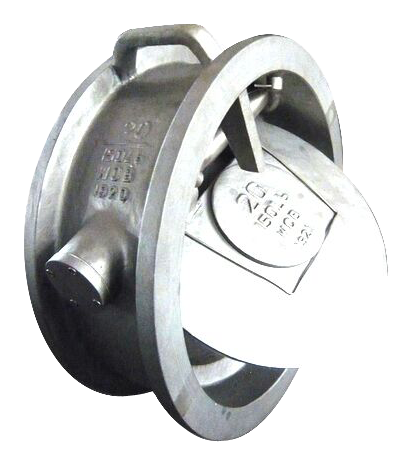The
wafer check valve is a crucial component in preventing fluid backflow and ensuring the stable operation of pipeline systems. Compared to traditional swing check valves, wafer check valves offer a more compact design and greater installation flexibility. However, their operation typically relies on fluid flow and pressure differentials.

In many applications, wafer check valves operate automatically without the need for manual intervention. However, in certain situations, whether manual operation is possible or how it can be performed is a common concern among engineers and technical personnel. This article will explore the manual operation of wafer check valves in depth, including their operating principles, applicable scenarios, and potential limitations and precautions.
1. Basic Working Principle of Wafer Check Valve
A wafer check valve is an automatic valve designed to prevent fluid backflow, typically relying on gravity or a spring mechanism to close the valve disc. When fluid flows forward, the disc opens to allow passage; when the flow stops or reverses, the disc closes, effectively blocking reverse flow.
Due to its compact design, wafer check valves are widely used in water treatment, HVAC systems, and oil & gas pipelines, particularly in applications where backflow prevention is critical. Their operating characteristics allow them to function automatically, eliminating the need for manual intervention in most cases.
2. Why is Manual Operation of a Wafer Check Valve Necessary?
Although wafer check valves are typically automatic in operation, there are certain situations where manual intervention may be necessary. Here are some common reasons:
· Maintenance and Inspection
During equipment maintenance, manual operation of the valve may be required to ensure proper functionality. By manually opening the valve, technicians can check if the valve disc moves freely, whether the spring is functioning correctly, or verify the valve's sealing performance.
· Special Control Requirements
In precise fluid control system, manual intervention may be necessary to regulate the valve's opening and closing, especially when flow rate or pressure fluctuations are significant. In such cases, manual control offers greater adjustability to maintain system stability.
· Preventing Valve Disc Sticking
In some environments, the valve disc may become stuck due to prolonged inactivity. Manual operation can help dislodge the disc, ensuring the valve closes properly.
3. How to Manually Operate a Wafer Check Valve?
· Manual Control Mechanism
Many wafer check valves are designed with manual control mechanisms, allowing for manual operation when necessary. These mechanisms include:
· Manual Screw Drive
Some wafer check valves are equipped with a manual drive system, where a rotating handle or screw mechanism allows easy adjustment of the valve disc position, enabling manual opening or closing.
· Electric or Pneumatic Actuators
Certain wafer check valves can be fitted with electric or pneumatic actuators, making manual operation more convenient, especially in environments where direct valve access is difficult. In such cases, operators can manually adjust the control mechanism, allowing for precise regulation of the wafer check valve’s open and close state.
4. Precautions for operation
Although manual operation is possible, special precautions should be taken:
· Valve Specifications
Ensure the wafer check valve meets your operational requirements. Different models may have varying manual operation mechanisms, so familiarize yourself with the operation manual before use.
· Operating Environment
Perform manual operation in a clean, non-corrosive environment to prevent contamination or damage to the valve.
· Inspect the Valve Disc and Spring
Before opening or closing the valve manually, check whether the valve disc moves freely and ensure there are no obstructions. The spring function should also be inspected regularly to maintain proper elasticity for quick valve closure.
· Avoid Frequent Manual Operation
Wafer check valves are designed for automatic operation. Excessive manual intervention may affect performance and lifespan. Operate manually only when necessary to prevent premature wear.
5. Limitations and Risks of Manual Operation
Although wafer check valves can be manually operated, there are certain limitations and risks to consider:
· Valve Wear and Tear
Frequent manual operation may cause wear on the valve components, especially over time, potentially affecting the seal performance and preventing the valve from fully closing.
· Operational Errors
Manual operation depends on the operator's experience. Improper handling may lead to valve damage or even system failure.
· Unsuitability for High-Flow Systems
In high-flow pipelines, manual operation may not provide precise or timely control, and excessive force on the valve could lead to mechanical stress or damage.

